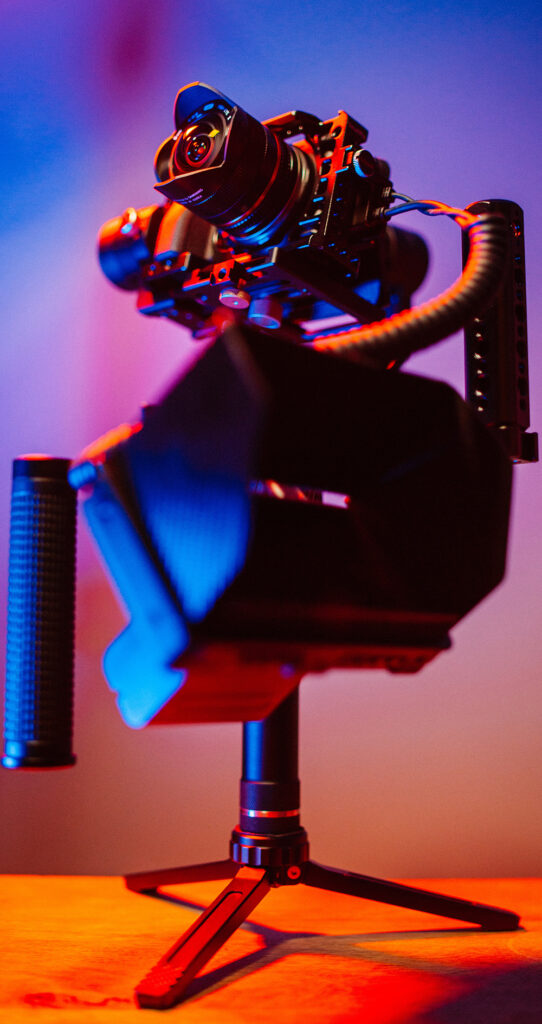
As you know gimbals are becoming increasingly popular and we
wanted to make a blog specifically geared towards this piece of equipment that we use for pretty much every single corporate cinematic shoot and the good thing is that all these tips and tricks can be applied with pretty much any gimbal that you have been using from dji, to crane to osmo etc . Same techniques are applicable in all cities like noida , gurugram, ncr, gurgaon.
so let’s go ahead and jump into our top gimbal tips and tricks for producing cinematic content while doing corporate projects
1 Number one is to make sure your gimbal is properly balanced. This one step is where most people tend to roll their eyes since they think that it’s a super basic step
but they also don’t understand how important it is and why most people aren’t getting smooth shots . If your glidecam isn’t balanced properly it won’t even be able to stand upright but if your gimbal isn’t balanced it will still look like it’s perfectly balanced and ready to film and that’s why people ask us why their footage isn’t smooth and that’s because most of the time it’s their gimbal that is unbalanced and they don’t even know it because they’re looking at it
and it looks just fine but if your gimbal isn’t properly balanced your motors will have to work even harder to balance your camera which will drain your battery life and won’t eliminate all the bumps and shakes again2 Number two is turning the gimbal not the joystick .Now most gimbals such as the ronin rs2 , s3 come with a joystick and the joystick will actually control the camera
and allow you to move it in any direction that you want. It’s a really great feature and it’s the most obvious thing to use to turn your camera but it will also ruin your shot
One of the downsides of a gimbal compared to a glidecam is that gimbals tend to have a more robotic look to them. Whenever you’re using the joystick it starts looking like a robot on top of that the joystick is way too sensitive and of course you can change the speed of the joystick in your settings but if you’re walking with your gimbal
and you want to pan slowly to the right ,if you try to use the joystick it’s more than likely going to be too fast or it’ll stutter a little bit because you’re trying to do this very slow. So if you’re wanting your camera to turn a certain way while walking don’t use the joysticks just turn your wrists. If you turn the base of the gimbal the camera will follow along also so if you’re walking one direction and you want to pan to the right simply turn your wrist towards that direction and the camera will follow . Avoid that joystick and just make the subtle movement with your wrists3 Number three is to use a monopod . What you may not know is that the bottom of your gimbal is a place to screw in the tripod plate. Now this can be used of course to just
set it on the tripod and control the head from your phone or something like that but is even more amazing because you can put your gimbal on the monopod now the weight of a gimbal can start to take a toll on your body after a few hours, so using a monopod can take a lot of the weight off which still enables you to get smooth shots but what i mostly use the monopod for is getting creative shots that you wouldn’t be able to do without a gimbal . Like one is to fake a crane shot since the gimbal head will always face the same direction if you place your gimbal on the monopod you can either raise it or lower it to create what looks like a crane and people may think that we bought a 2
crane hold the massive thing out there for this one specific shot but we actually just placed our gimbal on a monopod. Now you can do a crane shot go through tight places like a car window the possibilities are endless and all you have to do is put your gimbal on a giant pole so don’t throw away that monopod just yet. Use it to get some really unique and cinematic shots.4 number four is to shoot for the edit . One of the most popular and trendy things right now is transitions with a gimbal and i mean they are everywhere but if you’re wanting to do something similar you’ll need to plan it out . If you’re wanting to do a whip pan transition you’re going to need to start your gimbal shot and then quickly pan to the left then the next gimbal shot start with panning quickly to the left and then ease back into normal and once in the edit you can blend those shots together seamlessly because you planned it out beforehand . If you just decide to add a preset transition to any shot it doesn’t look nearly as good as if you planned it out beforehand and actually move the camera in the direction of the transition.
Now good thing is this can really be done in any way possible,if you know you’d like a cool transition simply pan towards a direction and then do the same thing in a different location. You can do left to right ,up and down ,spin or go diagonal5 number five is to keep your setup light weight.
Sometimes you buy a new gimbal and in a sense of excitement put as many accessories on it as possible to look more official to everyone but it didn’t just weigh your setup down to the point it becomes miserable to hold for a long period of time ..but it also will hinder you from getting better shots smoot shots because the motors have to work extra hard with the added weight. Whenever the motors have to work harder it can limit how well they can adjust to quick movements which result in a less cinematic shotnumber six
is the way you walk. now the reason we’re making a point about this is because when people ask us why their footage isn’t smooth . It’s mostly because they’re walking like
they’re just strolling down the street and people say oh i know that we have to walk like that for a glidecam but a gimbal is different it’s motorized and it takes all those walking movements out and that of course is a lie. You operate a gimbal the same way you do a glidecam when you walk you bend your knees and you walk like your lower half
is completely separate from your upper half let your legs absorb everything without letting it get to your upper half.
the reason behind this is for all of those bumps and shakes that you see in shaky footage ,they are always caused from your legs up into your arms and that is why you need to separate the two and absorb everything in your legs. It definitely takes some practice
physically and mentally to walk properly for gimbal.
Need professional videographer with gimbal in gurugram. Call us today
7042111335
